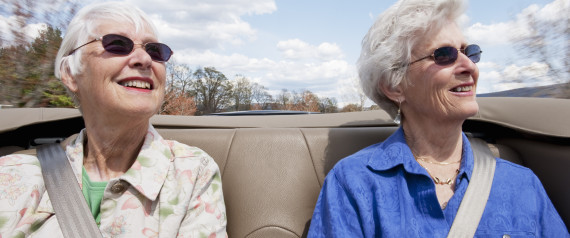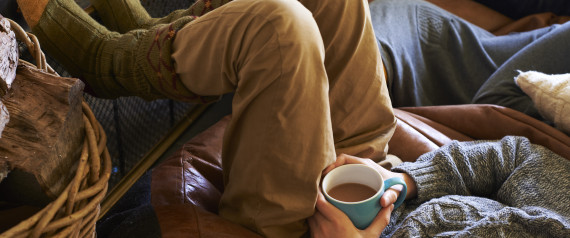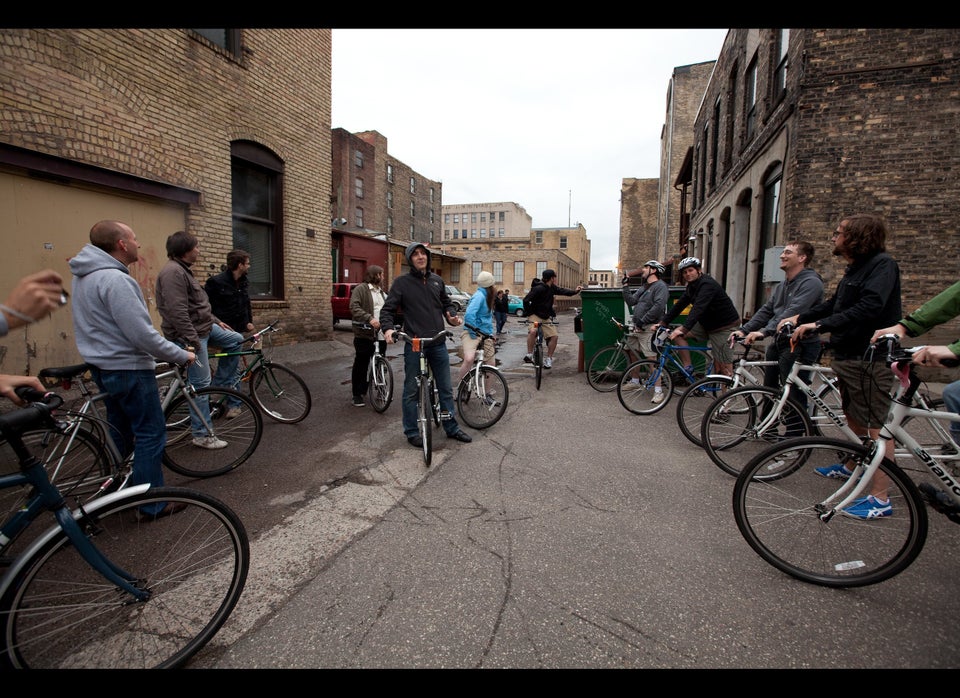
Our Living Well, On Location series explores cities and countries from around the world. How do other people pursue health and happiness? We're going coast to coast, country to country to find out.
If you've spent any time on New York City's subway system over the past five months, you've likely noticed the state's $60 million tourism campaign, plastered inside and outside the cars, encouraging New Yorkers to "Get Outta Town." The campaign promotes a swath of New York State destinations, including the Catskills, the Hudson Valley, Long Island, Coney Island (oddly enough) and the Adirondacks.
Although Upstate New York -- a region which (in this writer's opinion), begins outside the greater metropolitan area and is bounded by Canada to the north, Vermont to the east and Oneida County to the west -- often takes a backseat to the glitz and glam of the city, the state's northern frontier has called to urbanites since the days of Emerson and Thoreau. As it turns out, the early Romantics were onto something: When it comes to living well, upstaters may be able to teach us a thing or two.
Upstaters are early adopters

Progressive legislation in New York State goes way back. In 1984, New York became the first state to pass a mandatory seat-belt law, causing motor-vehicle deaths to drop 27 percent during the first few months that followed, according to the New York Times. New York was also the first state to outlaw hand-held cell phones while driving in 2001.
And state lawmakers don't just regulate safety: Upstate New York has also been on the forefront of progressive health measures, like the Clean Indoor Air Act of 2003, a statewide ban on smoking in workplaces, bars, restaurants and colleges. Strict laws combined with New York's sky-high tax rate on cigarettes have earned New York its reputation as the least smoker-friendly state in the country. And all this regulation seems to have paid off. New Yorkers are smoking less than ever, perhaps in part because -- as Gallup reported in 2011 -- states with aggressive antismoking laws tend to have fewer smokers than their freewheeling neighbors (we're looking at you, Kentucky).
Small towns mean the living's easy

So long, metropolis! Upstate New York is littered with small cities and towns. And while the jury is still out on whether urban or rural residents are happier, there's a strong case to be made for the mental health benefits of small-town life. City dwellers have a higher risk of anxiety and mood disorders, and children who are brought up in a city are twice as likely to develop schizophrenia later in life.
While plenty of people thrive in urban environments, for others, the stress of high rent, constant noise, crowds and lack of privacy outweighs the benefits. One upstate city to watch? Saratoga Springs got a nod from two national publications in recent years. The 27,000-person city landed a spot in Money Magazine's 2011 roundup of the 100 "Best Places to Live" (based on factors like purchasing power, housing, education, quality of life and weather), as well as making Travel + Leisure's 2012 list of "America's Greatest Main Streets." While small towns sometimes get a bad rap for being car-dependent and provincial, T+L cited the city's Beaux-Arts and Colonial Revival-style architecture, sidewalk cafes and benches, summer horse-racing season and walkable downtown as reasons the town is worth a visit.
Outdoor exercise is a way of life

Outdoor exercise, especially when it takes place in nature, can boost mental health, and upstaters have plenty of space to get active. Clocking in at 6 million acres, Adirondack Park is the largest park in the lower 48 states, boasting more than 31,000 miles of rivers and streams; 3,000 lakes and ponds; 2,000 miles of hiking trails; and 100 mountains.
Upstaters don't take their recommended daily dose of vitamin D lightly: Founded in the 1920s, the Adirondack 46ers club recognizes individuals who have climbed all of the 46 highest peaks in the region (each with an elevation of 4,000 feet or more). Since the club's creation, nearly 8,000 hikers have earned the right to call themselves 46ers, with an additional 643 identifying as Winter 46ers -- meaning they have climbed all 46 peaks between December and March.
Vacation is a time-honored tradition

"In the wilderness we turn to reason and faith," Ralph Waldo Emerson wrote in his essay, "Nature." And upstate New York is the original wilderness holiday spot. Following the Civil War and an improved economy, American's burgeoning middle class was in pursuit of leisure activities. Urban adventurers -- aided by the railway boom and a popular travel guide entitled Adventures in the Wilderness; or, Camp-Life in the Adirondacks -- headed north in droves each year, primed for a summer of hiking, canoeing and fishing. And when the uber-wealthy Vanderbilts, Rockefellers and Carnegies began to say they were "vacating" the city for their luxurious summer camps in the Adirondacks, the British term "holiday" was dropped, and the word "vacation" entered the American lexicon.
According to researchers, leisure activities, including vacation, can lead to an increase overall well-being and better mental health. "It is important to engage in multiple leisure activities, both as a way to enjoy life more, but also to potentially have a benefit on health and be a stress reliever," Karen Matthews of the University of Pittsburgh's Mind-Body Center told NPR.
Most importantly, taking an annual vacation could mean a longer life. In a large-scale study published in the journal Psychosomatic Medicine, middle-aged men at risk for coronary heart disease who took a vacation every year were less likely to die early, and less likely to die of heart disease, than their non-vacationing counterparts.
Locavorism is on the rise

We all know we should be eating more fruits and vegetables. After all, a produce-rich diet can reduce the risk of heart disease, stroke and certain cancers. In practice, however, getting your daily fix is infinitely easier when fresh fruits and vegetables are close at hand.
And eating well has never been more convenient for upstate residents. According to Strolling of the Heifer's (a Vermont-based local food advocacy group) 2013 Locavore Index, New York State made huge gains in locavorism last year, skyrocketing from lowly no. 42 out of 50 in 2012 to a respectable ranking of 25 last year. The rankings were based on the number of farmers' markets, CSAs and food hubs in the state, as well as on population.
Part of this jump could be due to the fact that the number of farmers' markets in New York has skyrocketed over the last decade. According to the USDA, markets have grown 176 percent -- from 230 markets in the year 2000 to about 650 markets today, the most markets per state in the country.
They know the benefits of long-term commitment

New York natives might be hesitant to jump into wedlock (nearly 38 percent of residents have never been married), but when New Yorkers do tie the knot, they usually stay together. After New Jersey, New York has the lowest divorce rate in the country, just 8.7 percent, a number that falls even lower for multiple marriages (less than 2 percent of residents have been married three times or more).
Happy marriages come with the so-called "marriage advantage," health benefits that including decreased risk of contacting pneumonia, having surgery, developing cancer or suffering a heart attack. In contrast, divorce or the death of a spouse can take a major toll on health and well-being, and the negative effects can have a life-long impact. In an 8,652-person study published by researchers at the University of Chicago, divorced participants had a 20 percent greater chance of suffering from chronic illness (such as heart disease, diabetes or cancer) than their married middle-age counterparts, aged less gracefully and were more likely to have mobility issues later in life.
According to the study's authors:
Some health situations, like depression, seem to respond both quickly and strongly to changes in current conditions... In contrast, conditions such as diabetes and heart disease develop slowly over a substantial period and show the impact of past experiences, which is why health is undermined by divorce or widowhood, even when a person remarries.
They foster creativity and appreciate the arts

Upstate New York has a rich tradition of fostering creative arts like music, literature and painting. From the influential origins of Thomas Cole's Hudson River School -- where a generation of landscape painters ushered in an era of pastoral Romanticism that remains popular among museum-goers today -- to the thriving system of liberal arts colleges in the region, arts appreciation runs deep in upstate New York.
Of these liberal arts-minded upstate institutions, Vassar College (Poughkeepsie); Colgate University (Hamilton); Hamilton College (Clinton); Bard College (Annandale-on-Hudson); and Union College (Schenectady) continually rank among U.S. News & World Report's top 50 liberal arts schools, maintaining a high level of academic rigor while adhering to their respective traditions.
(Beyond the classroom, the list of prominent artists and writers who have called upstate home continues to grow. Writers James Fenimore Cooper, Herman Melville and Solomon Northup; musicians Pete Seeger and Natalie Merchant; and short-story author Lorrie Moore were all either born or reared upstate.)
Natural beauty benefits the community

It's not just your imagination. Upstate New Yorkers may actually be friendlier and more generous than downstate city slickers. In a University of Rochester study, participants who engaged with their natural surroundings placed a higher value on close relationships and community, while participants who interacted with primarily manmade environments valued fame and wealth.
Safety is a top priority

When a federal judge upheld New York State's strict antigun law in December, banning assault weapons in the wake of the school shooting in Sandy Hook, Conn., it catapulted New York to the forefront of the nation's struggle over gun control. While it remains to be seen if the controversial new legislation will prove effective in curtailing gun violence, it's not the first time that Albany lawmakers have upstaged their flashier New York City counterparts on the health-and-safety front.
Upstate New York has a history of adopting progressive laws to protect its residents' well-being, from the workers' safety measures spearheaded by Frances Perkins in the wake of the 1911 Triangle shirtwaist factory fire to the formation of the New York State Department of Labor, which continues to regulate wages, working hours, workplace sanitary and safety conditions to this day.
